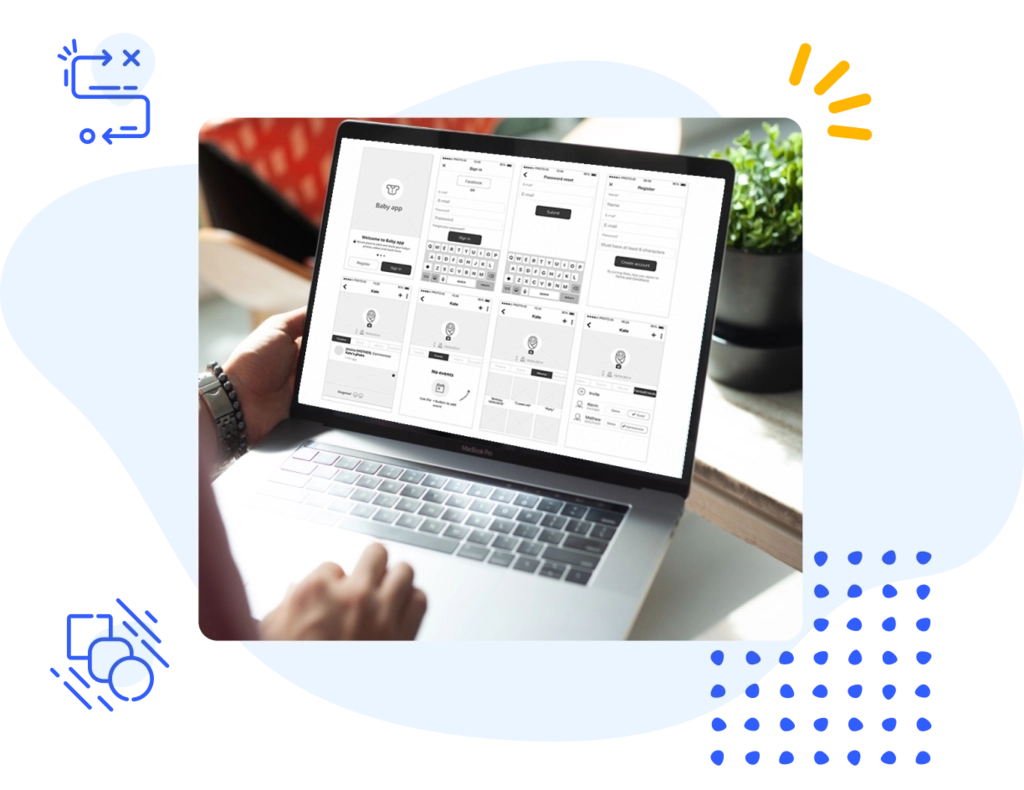
In this guide
The ultimate guide to user-centric product design
The ultimate guide to user-centric product design

Product design is a process that must be built on a foundation of human insight to solve user needs in the real world. The question is: How can product designers better leverage human insight into their process to get the best results?
This guide looks at the core stages of product design, the role of product designers, and the product design process through the lens of human insight. By the end, you’ll understand the fundamentals of product design and how designers can leverage user research to make their jobs easier, faster, and more effective.
What is product design?
Each time someone interacts with a product, those experiences compound to form a lasting impression of an organization, good or bad. Product design is the process of developing ideas and transforming them into digital products that solve user problems, meet market needs, and provide the best possible user experience (UX) to make a lasting positive impact.
Product designers conduct research to understand their target audience, design concepts to solve those problems, test concepts with real users, and iterate those designs until they’re ready to be developed into a real-world product.
Why is product design important?
The history of product design has a legacy that spans centuries throughout its evolution from physical to digital products. Regardless of the era—or the technology available—great product design has always centered on creating the best experience possible for the customer. Just look around you. Every item or product you see started with one human being considering the utility or experience their idea would create for another.
As technology has evolved, so have product design standards. From static websites to interactive web-based applications and mobile devices, the demand for user-friendly and visually appealing digital products continues to grow.
Uncovering a repeatable methodology for infusing digital products with human insight throughout the design process is the key to winning in competitive markets.
The importance of testing in product design
One of the most important tools in a designer’s toolbox is feedback. Design teams make critiquing work and gathering input from colleagues and peers a regular part of their creative process.
In fact, according to UserTesting’s annual CX Industry Report, 77% of designers report that they should get user feedback before launching any new or updated design. Yet when asked how often various experiences were tested with users, designers reported that only a few were being tested on a regular basis. This leads to less confident design decisions, not to mention running the risk of launching designs that don’t resonate with users. User feedback—at every stage of the design process—is a designer’s best strategy to create with confidence.
Learn how UserTesting customer, Canva, about the importance of customer feedback as part of the product design process.
4 key principles to great product design
We’ve narrowed down some of the most important product design concepts to these principles.
User-centricity
A user-centered design is key. Of course, to create products the right way, you'll need to have a solid grasp of your audience’s needs, preferences, and behaviors.
Thorough research and testing is the only way to meet those expectations and solve pain points. Doing so saves designers from guesswork throughout the process and lowers the risk of wasting time on ideas that shouldn’t be explored.
Usability
Usability is key. Make your products easy to use, efficient, and smooth to navigate through intuitive interfaces and clear navigation systems, and keep your design simple. Minimizing complex processes and unnecessary elements helps users navigate the product and keeps them from becoming overwhelmed.
Gestalt principles
It goes without saying that your product should work flawlessly. But looks matter, too. The product's appearance can make users feel good about using it and connect with it. Our brains are wired to see structure, logic, and patterns to help us make sense of the world. Taking advantage of these commonly recognized patterns known as Gestalt principles, helps product designers create a more intuitive UX.
Product designers must understand human psychology to create experiences that are compelling to users. Keep your design elements consistent throughout the product. This includes layout, color scheme, typography, interaction patterns, and branding. Consistency helps users become familiar with the product and gain confidence in using it.
Iterative design
Embrace an iterative design and testing process. Iterating based on user feedback and data helps identify and fix issues early before they become more costly later in the process. Start by testing design concepts or messaging to see how users respond to an idea.
As the design direction gets clearer, test wireframes with stakeholders and potential users. Create prototypes based on their feedback and test again to validate the product. Test during and after development to optimize features and ensure the product remains competitive.
No product will be perfect from the start. Ensure your team has processes—or even product features—in place to get immediate feedback on user actions so you can guide them through the product experience. You can take this data and apply it to future product updates and improvements.
Product designer skills and responsibilities
A digital product designer creates user-friendly digital experiences across different mediums and interfaces, such as software, apps, games, platforms, and websites. They’re responsible for the end user's overall satisfaction with a product or application, aiming to make a product or service more enjoyable, usable, and accessible.
Although tasks may vary from company to company, overall, product designers conduct user research, create customer personas, and design wireframes and prototypes to ensure a functional end product for the user.
Foundational skills for product designers
Product designers can be responsible for a multitude of tasks depending on an organization's size and structure. Most often, their job is to cast the vision for what a future digital experience might look like (or reimagine an existing experience), validate a design direction through testing, and then create all the digital components that will be used by the development team to build the final product.
Research and testing
Thorough user research is an important part of product design. An understanding of market research, user research, and competitive analysis is extremely valuable for product designers to have. Product designers also conduct A/B tests to inform design decisions and often run surveys, user interviews, and focus groups for research
Design and iteration
Proficiency in visual design tools like Figma, Adobe Creative Suite, Canva, and others sits at the core of a product designer’s toolbox. They also have a foundational knowledge of typography, graphic design, and UX/UI best practices to draw upon when creating new products.
The ability to work iteratively and make creative enhancements based on user feedback is another foundational aspect of the product designer’s process.
Collaboration
Product designers collaborate with other departments, such as product, UX research, and development, to complete new projects. To collaborate successfully throughout the product development lifecycle, they draw heavily upon design thinking principles and creative workshopping frameworks and exercises to get stakeholders on the same page. This helps them create user journey maps that guide product development.

Get actionable insights today
Uncover human insights that make an impact. Book a meeting with our Sales team today to learn more.